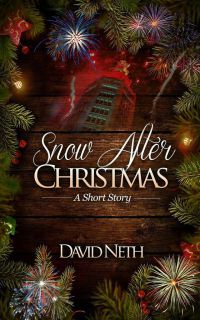David Neth's Blog, page 6
July 1, 2016
Getting Reviews
Reviews are important. Take a look at a brand new book on Amazon and when the bottom of the page doesn’t at least have some reviews, the page looks flat and unattractive. Find a page with hundreds of reviews and it’s more eye-catching.
The amazing thing about this is they don’t necessarily have to all be good reviews, either. In fact, if all of your reviews are 5-stars, then that looks a little suspicious. Like you asked both sets of grandparents and your mom to each right a review on Amazon. Of course they’re going to love it. Of course they’re going to boost your ego when they tell you. But they’re not the ones that should be leaving reviews on Amazon.
Not only do reviews give your book credibility as a sales page, but they help give readers an idea of what to expect from the book. Some readers like to read spoilers in reviews. Others (most) don’t.
While reviews are important to have on your page, getting them is a struggle in itself. Unless a reader is completely blown away by your book, they’re unlikely to leave a review. Some readers habitually leave reviews. Some just don’t think of it.
Amazon actually encourages readers to leave reviews after they’ve finished reading your book on a Kindle. That helps, but the conversion rate isn’t 100%. But there are some more places you can ask to help get some honest reviews:
At the end of your book – The page after the story ends, ask readers to please leave an honest review online. Some authors put the review requests on the same page as the end of the story, but I think that’s too much. Do what you want with your book, though. It is, after all, your book.
On your mailing list – When you encourage readers to buy your latest book, ask them to please consider leaving a review online.
Social media – Remind readers that a free way they can help you out even after they’ve bought your book is to leave a review.
A fourth way to get reviews is to offer freebies. That’s a slippery slope because you don’t want to get carried away with giving your entire catalog away for free, but it could be a useful tool.
For example, I’ve been turning my books into audio regularly since I started publishing. Honestly, I didn’t know what to do with the promo codes. I gave away a few, but most were just sitting on a piece of paper pinned above my computer.
Then I decided to do something with them. I announced my latest audiobook to my mailing list and offered a giveaway: the first 40 people to reply and request one of my books would get an Audible copy for free. In reality, I had probably closer to 55 codes to use, but I figured 40 was a safe number.
This effort was beneficial for myself and the reader: they got a free book, and Audible counts it as a sale for me. Win win.
The response was better than I was expecting. I didn’t get 40 people, but I did get probably 30. I “sold” probably about 50 books. Since there were a lot of questions about what to read when, I was very liberal with my gifting. I had the codes, so why wouldn’t I use them?
The number of reviews I got are hard to track. But I did see a noticeable bump, mostly for The Full Moon, but Snow After Christmas and The Blood Moon both got their fair share.
The reason it’s hard to track is because I left it open. I said they could leave a review on Amazon, Audible, and/or Goodreads. Some people decided to post to all three, others chose one and only published their review there.
In the end, having reviews on all retailers is important. So even if I only reached 10 reviews on one book on Amazon, that’s okay. Across the board I have more.
Once I go wide with more of my books, I’ll have to think of different way to encourage reviews on the various retailers. For now, I’m happy with the result I got and will likely do it again. I’m also curious to see what my ACX report for April says.
A few tips:
Always ask for an honest review. And make sure they state that they received a copy in exchange for an honest review.
Follow through with your promises. If you promised to give readers book 2 if they reviewed book 1, give them book 2 even if they gave you a bad review.
Don’t be spammy. I think only about 40% of the people who I gave free books to actually left a review. Like I said, it’s hard to judge, but that would be my guess. In that time, I only sent out one reminder email and only responded to emails after they contacted me first.
So those are some ideas to gather some reviews for your books. Some folks have an advanced reader team, which I’ve been meaning to explore, but I just don’t have the time yet. I can definitely see the benefits of getting a bunch of reviews on release day and watching my book shoot up the charts. That’s something I’ll have to work on just as soon as I give myself some breathing room.
June 28, 2016
Over 30 books for less than a dollar each!
I’m participating in another group promo this week! For a limited time only, get The Full Moon, along with over 30 other books, at a special rate. Each book is less than a dollar!
Take a look at the selection below or follow the link in the image above to take advantage of this great deal!
Don’t forget to follow me on Facebook, Twitter, and Instagram and to preorder your copy of The Harvest Moon (available August 6th).




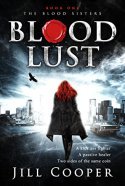
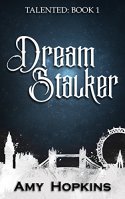

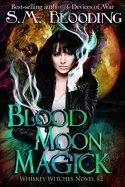


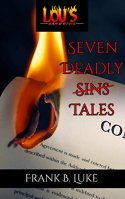


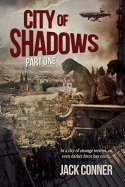

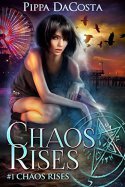

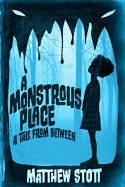
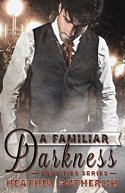
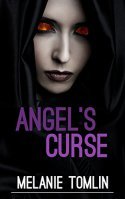




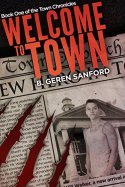
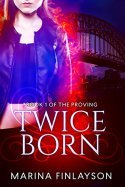
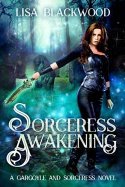
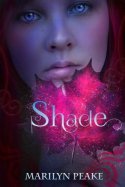
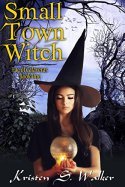




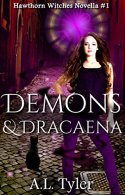
June 24, 2016
Diversifying Your Income
I’ve been meaning to write a post about having a diverse income since I started the blog. Even though I don’t have my own personal data to back up my argument, I decided to write this post anyway.
One of the things many indie authors will likely consider at some point throughout their career is whether to enter into Amazon’s Select program (which requires exclusivity) or to “go wide” by uploading to all the other retailers (thus forfeiting any Select benefits).
When I first published The Blood Moon, I decided to go wide. The thought of being exclusive with Amazon scared me, especially because I wanted to make publishing a full-time career. What if I had a bad month on Amazon and there was nothing else to pick up the slack? What if Amazon changed its policy and no longer sold indie titles?
So I thought it was better to begin to gain traction at the other retailers early so I could slowly build my income across all platforms from the get-go.
As with almost everything, once I got in the game I realized that it was a difficult challenge. Getting started in indie publishing can already be an uphill battle, and starting without the benefits of Select and KU seemed like I was staring up the side of a cliff. Impossible to climb. My sales at the other retailers reflected as much.
So with my next release, a short story, I experimented with Select. I didn’t see a lot of sales, but I got a lot of free downloads and organic reviews. Oh, and page reads from KU. Those were cool to see.
The success of the short story made me want to experiment further with my next full-length release. So when I uploaded The Full Moon, it was Amazon exclusive. My sales were better, but still not even part-time worthy.
At this point, I was looking outside of my book sales to diversify my income. I no longer had a second job and I needed something to help pay for the production costs. That’s when I began taking on formatting jobs. The formatting side of my business has more than paid off. In 2015, it made up 65% of my total income. Considering I had a loss last year, that’s not saying a lot, but that’s still 65% of the money I made that I wouldn’t have had otherwise.
My formatting business has only grown and in January 2016 alone, I nearly matched what I made in 2015. Thanks to my formatting jobs, I don’t need to get a second job and I now have more time to put out my books.
But I’m still not making anywhere near full time or even part time income. So I decided to experiment further. I signed up for Amazon Associates in February and began placing my affiliate links on my website, social media pages, and in my mailing list newsletters. The money I make from it isn’t outstanding, but it’s an extra $20-$30 a month and I know it will go up as I gain more readers and write more books. Every little bit helps, so if you’re thinking about picking up one of my books (or anything on Amazon, really), use one of the links on my website and I’ll get 6% of your total bill with no extra cost to you.
A third way I’m making money from my books is through face-to-face sales of my paperbacks. I previously posted about this, but let me summarize it here: I’ve made $267.80 from direct sales of my paperbacks between October 2015-March 2016. To established authors that’s not a lot, but for me, that $200 pays for my next book cover and then some.
As for my books in Select, I’m still experimenting. My plan is to keep them in Select for six months (two Select terms) before releasing them wide. For The Full Moon, that’ll mean it goes wide just as The Harvest Moon is being released exclusively to Amazon.
I don’t know how long I’m going to release this way (first six months in Select before going wide). I’d like to get to a point where I can release wide, simply because Amazon sales can be fickle and the company is leaning more toward KU borrows. Frankly, I don’t want to have to rely on playing their games. Plus, from what I’ve read, authors who are wide see more steady sales. Amazon is still the largest chunk of their income, but it’s not their only source of income.
Someday I’d like to expand in a publishing company that offers different services for authors besides just formatting. I’d like to branch out into editing, cover design, and maybe even promotional opportunities. For the moment, my books are my main concern. Getting them out and getting them to sell is the most important, but we’ve all gotta live. Therefore, I have to make money.
Get Snow After Christmas FREE today and tomorrow!
I’m a Christmas nut, as is the rest of my family. We can’t help but note the significance of the 25th each month. To celebrate the halfway point to Christmas, I’ve made Snow After Christmas FREE today and tomorrow on Amazon (regular $0.99).
Please pick up a copy and leave a review! It’s also available in audio and paperback!
A chance moment. A snow storm. And the gift of a new beginning.
Tristan is ready to party and ring in the New Year by kissing his soon-to-be girlfriend, Julie. The only bad note in his rocking night is the growing snow storm. Outside his apartment, he’s almost hit by Grace, the most beautiful woman with haunting green eyes. She’s on her own mission to get home to her grandfather.
In a selfless act reminiscent of the age of knights and chivalry, Tristan vows to get her home…never realizing they are both on a date with destiny and their lives will be forever changed by the SNOW AFTER CHRISTMAS…
Don’t forget to follow me on Facebook, Twitter, and Instagram and to preorder your copy of The Harvest Moon (available August 6th).
June 19, 2016
Get Limelight for FREE today only!
Today only, get Limelight completely FREE! Take a look at the description below and see if you’re interested. Don’t forget to leave a review on Amazon or Goodreads! Limelight is also available in audio.
For Jay Owens, being a celebrity was exactly what he wanted. Access to the clubs with the best parties. Devoted fans who would give anything for a picture with him. First-class travel around the world.
But as the luster of his fame began to fade, he became desperate to find a way to retain his stardom. Jay was once again prime tabloid fodder when he married actress Heather Garrison, catapulting him back to the top of the charts.
Wedded bliss wasn’t Jay’s plan, though. Publicity was. When his estranged wife delivers some unexpected news, Jay and Heather’s fragile charade threatens to crumble, putting his career at risk yet again.
Don’t forget to follow me on Facebook, Twitter, and Instagram and to preorder your copy of The Harvest Moon (available August 6th).
June 17, 2016
Group Promos
I’ve touched on this a bit before on the blog, but today I’m focusing on group promos. Sometimes also called multi-author promos, group promos are a great way to network with other authors, reach more readers via other authors’ followers, and gain more attention to you and your books.
The first group promo I did was in February with 49 other authors. The purpose was to get mailing list sign ups. Any sales or reviews gained afterwards would be bonus (I didn’t get either). It was organized by another author in the fantasy genre and cost a small fee (I think like $8 plus the cost of my book, so mine was $11.99). She put together a giveaway that consisted of all 50 ebooks and a Kindle Fire. The first winner would get the Kindle loaded with all 50 ebooks and five other winners would receive the 50 ebooks.
Everyone who participated in the promo needed to notify their mailing lists and social media followers. Some people even opted to do paid advertising for the promo. The response was great and in just two weeks, we had 5,451 entrants.
That meant I got 5,451 new subscribers to my mailing list (Which didn’t all stick because not everyone read the fine print. In the end, I really gained about 1,600 new subscribers. Read my last post for a more detailed explanation.)
That promo in itself didn’t change my sales at all. But it gave me a better platform to announce future promos I was running. My next few free Select days saw about 200-300 downloads each. Not huge numbers compared to some authors, but a significant boost from my previous sales.
The taste of success made me hungry for more. I signed up for Patty’s monthly sci-fi and fantasy promo at the beginning of March that was targeted toward Kindle Unlimited reads. I was dumb and used a Select free day for the first day of the promo and got over 350 downloads. It was a nice bump, but not what I was looking for.
I signed up for another promo at the beginning of April, which didn’t do as well. I did make six sales (better than my previous zero) and 58 free downloads, but otherwise, that promo (which I paid about $15 for) was pretty disappointing.
Still, I signed up for several more group promos and I plan to continue to do so. Like I said earlier, they’re a good way to share the weight of marketing. I got to dip into other authors’ followers while giving mine a whole slew of free or discounted books.
I do fear that I’m saturating my list too much with my books. Right now, my releases are still pretty far apart (I had a short story release last month that didn’t do that well, as I suspected). The book I’ve been pushing the most to my readers is The Full Moon. How many times can I push the same book to them? Once they’ve bought it, they’ve bought it. End of story.
I’ve also pushed Snow After Christmas, but it’s a holiday short story unrelated to my series, so folks either aren’t interested in my non-fantasy stuff or they don’t care to read a holiday short story in the spring/summer. Still, I’ve seen a lot of good response to it that makes me want to write more Christmas stories. It makes me wonder how the title will do this fall closer to the holidays. Especially because I’ll have a number of new releases then.
The Blood Moon isn’t in Select and with the screwy way I released the books (The Full Moon should be first, yet it was released second, and The Blood Moon should be third, yet it was released first…) I’m limited to what I can promote. As I get more releases out, I’ll be able to play around a bit more.
One of the goals I have for this year is to really ratchet up the release of The Harvest Moon in August. Apply for a few paid promos and get in on some group promos to give the book a nice boost when it’s released August 6. I’ll be posting on that once it happens.
To wrap up this post, I’d just like to restate that group promos are an essential part to whatever success I’m seeing now. It’s still limited, but I see so much potential. I just need time and money to get more books out…so I can make money a different way. Funny how life works that way.
Anyway, I wouldn’t be where I am today, with the reach that I have, without group promos. At the beginning of the year I had about 20 subscribers and maybe five reviews total on Amazon. Now I have over 6,000 subscribers and over 20 reviews on Amazon. Still not a lot by some standards, but I’m very happy with where I’ve gotten. And its all thanks to group promos.
June 10, 2016
The Importance of a Mailing List
One of the most powerful tools anyone who is selling something can have is a mailing list. Prior to the internet, mailing lists were still sought after through postal addresses. The execution of those mailing lists were costly and wasteful. However, now we have email lists and while you may need to pay to maintain your list (based on the service you use and the number of subscribers you have), the cost is more manageable while the value remains the same.
Well-established authors discovered the value of digital mailing lists with the popularity of ebooks. In a matter of a few clicks, readers can be notified of a new release, buy it, and begin reading it. To marketers, that connection is gold.
I previously shared some tips to build your mailing list. That post, while effective if you have steady traffic to your books and your social media pages, doesn’t necessarily relate to newbies who are fighting an uphill battle to get devoted readers.
A few months ago, I participated in my first group promo that gathered email sign ups, and my list went from 23 subscribers to 5,445 subscribers in a matter of minutes. With it, Mailchimp forced me to pay $65 a month to send an email to those subscribers.
That payment was a tough bill to pay. I suddenly had the subscribers, but I didn’t have the sales to support a monthly cost. Still, I was optimistic that they would pay off.
The first thing I promoted was a free promo for my holiday short story, Snow After Christmas. I gave away over 300 books, which was the most I’ve ever given away (granted I was participating in another group promo to get downloads).
The open rate for that email was 46.9% (2,539 opens) and had a 7.7% click rate (418). The number of unsubscribes was understandably high (432 unsubscribes, 25 reports of spam), but the engagement was more than my previous 23 subscribers.
What bothered me were the number of people who hadn’t even opened the email. Over half of the list ignored my email and I was paying for them. I couldn’t afford to pay for them, so I decided to try to purge them further. I sent another email in the same month to the remaining 4,981 subscribers (advertising another sale), but I was mostly hoping to see who still didn’t open it.
The numbers were worse (18.1% open and 4.9% click), though the culprit might be using the same sale for the same book two weeks later. Those who wanted to pick up that particular book (that wasn’t even my main series) already did. I had 142 people unsubscribe and another 12 mark it as spam.
I sent a few more emails advertising sales for The Full Moon and saw more unsubscribes (maybe due to frequency, maybe due to people actually finding the unsubscribe link instead of ignoring it).
What I did after that was likely very foolish, but I was keeping an eye on my costs. I deleted the subscribers who hadn’t opened the last two emails… My list dropped down to 1,721. If they had opened one of the last several emails I sent, they stayed. Otherwise I booted them.
That put me under the 2,000 subscriber limit and made my list free to me again. But it also decreased my reach. In hindsight, I should’ve kept those dwindling 5,000 subscribers until my next novel is released in August to see how the list would respond to a new release in my series.
I was a part of another group promo where people chose whether to sign up to my list or not and I discovered an interesting thing: some of the people who were just on my list but never opened anything signed back up.
How could that be?
Well, according to some other authors, Mailchimp reporting can be off. Depending on the browser or the email client, subscribers might’ve opened and clicked my emails and it never properly reported. If I would’ve known that, I don’t think I’d have deleted any subscribers. I wish I hadn’t.
It might also be that they just didn’t care about my holiday short story and they just wanted to see what new fantasy books I put out. So again, I should’ve waited until The Harvest Moon comes out in August. Lesson learned.
After another group promo (which are great, by the way), I’m about to receive another big chunk of subscribers, but these will be different:
The author running the promo is going to email the subscribers prior to sending us the list verifying that they want to be signed up to 30 authors’ lists. This will likely significantly decrease the number of subscribers still okay with it, but with over 2,400 subscribers so far, any fraction of that will still be beneficial.
After I receive the list, I’ll put the new subscribers in a separate list and email them, asking them to sign up for my list. Those that do get added, those that don’t will be forgotten.
We’ll see how it goes. In the end, if you have a responsive and engaging list, that’s the backbone to your sales. Those are the people you can count on to buy each new release.
June 3, 2016
Don’t Forget Paperbacks
The focus for most indie authors are ebooks. They’re cheaper to produce, easier to market to readers due to a plethora of reasons (mostly the price, though), and they require significantly less time to format them. While the internet has made it easier to publish books and read books, it still doesn’t replace the power of paperbacks.
Last month I was figuring out my publishing numbers (sales, revenue, expenses) and I made a very surprising discovery: for book sales, I made the most money from paperbacks. What’s more was that figure represented my income when my catalog was just starting out.
Let take a look at the numbers:
August-December 2015:
The Blood Moon – $113.93 from paperbacks ($41.97 of which were in-person sales)
Snow After Christmas – $4.86 (no in-person sales)*
January-March 2016:
The Blood Moon – $57.09 from paperbacks ($41.97 of which were in-person sales)
The Full Moon – $91.92 ($69.54 in-person sales)
*Snow After Christmas is a holiday short story
To further put things into perspective, because I was just starting out, I made $433.17 in this time period of just over six months (newbie figures). I made $267.80 from paperbacks, meaning 62% of my income was from paperbacks.
I’ve always thought paperbacks were seriously ignored by indies, but this data proves that they’re worth something. Obviously, this data is tailored to me and my books, but it doesn’t mean that anyone can’t push their paperbacks as much as their ebooks and make more money per sale.
The funny thing is, the same shopping behaviors apply to readers of paperbacks. When I put out The Full Moon, I sold copies of both that book and The Blood Moon. The sell-through is still there.
Like with ebooks, these numbers will likely grow with the more books I put out. I recently bought an inventory of all of my paperbacks and will be more aggressive in selling them face-to-face or online from me directly.
Maintaining inventory can be expensive, but the amount of money you make per sale is more, depending on how you set your prices. Don’t inflate your paperback prices to make your ebooks more appealing. You might sell more ebooks, but how many ebooks are you going to have to sell to make what you could’ve made from one paperback sale (at a reasonable price)?
I’d like to explore setting up a table at a fair or a festival and selling books that way. I know some indies say they usually don’t sell very many but, like everything, I have to try it for myself. If I would’ve ignored paperbacks like all the other indies said, I wouldn’t have made more than half my book income these past six months.
May 27, 2016
Career Steering
Like most new indie authors, I struggle with getting to where I want to be. When you start out, you have nothing. No book. No money. No fans. Building that base takes times, which is why a lot of people end up quitting before they realize their dreams of being a successful author.
When I first decided to self-publish, the first thing I did was start a designated bank account for publishing funds. At the time, I wasn’t thinking about becoming a business, I just wanted to stash money away to spend on covers and editing when I was ready for it.
Eventually, I ended up with two jobs. My full-time job and my part-time one immediately afterwards. I used the weekends to write and edit. Back then, I wasn’t as consumed with publishing as I am now.
At the time, my part-time job was the main source of funding for my publishing account. It wasn’t much, but it was something. I was frustrated by the molasses pace I was moving in, but the money (and the time) simply wasn’t available to me.
I thought I’d see some financial relief once I put out my first book. I wasn’t expecting to be topping any Amazon charts, but I was expecting at least weekly sales. Don’t get me wrong, the first two weeks were great for sales…and then they trickled off. I pushed my efforts to my next release, a holiday short story.
Two months after my first release, I left my second job. Along with it, my funding for publishing. By then, I had my second book ready for release, the following short story ready, and I was editing my third book. But I knew I didn’t want to shift my publishing schedule because even though I had freed up my evenings, I didn’t have the extra money to pay to produce books more frequently.
I thought about where I was and where I wanted to be. I could give in to the circumstances I was in and give up the publishing venture, or I could continue to move in the direction I wanted to go and give up some of that new found free time.
For a while, I had tossed around the idea of becoming a full-fledged publishing company. I even contacted a few prospective authors. But I realized that I didn’t want to lose focus of my books. If I took on other authors’ books at that moment, I would be working on their books, not mine.
But, what I could do was move a step forward in that direction without taking the jump just yet. Ease my way into it.
With my first book, I had formatted the print book using InDesign and even purchased the $700 program as an investment in my career. It was a severe hit to my funds at the time, but I knew it’d save me money on outsourcing my formatting.
With that in mind, I decided to begin taking on other authors’ books for print book formatting. I was simply expanding my business with an investment I had already made. The risk had been taking, it was just time for me to official “open the doors.”
Luckily, I got work right away. I knew how lucky that was and I was always a little fearful that suddenly I wouldn’t be able to grow a client base and I wouldn’t have any income to my publishing account then. That wasn’t the case. I worked through the entire backlist of that client and he referred me to another author. Meanwhile, I had two more authors contacting me through my website. All successful in their own rights and all looking to work with me on series.
That $700 investment has been made up several times over now. Formatting isn’t the sole source of funding for my publishing expenses, but it’s about 90% of it.
As an author, I’m not making much money. I’ve got changes coming to my release schedule that will hopefully change that. Even if the frequent releases don’t, expanding my catalog will help. Eventually, I’d like to see my income as an author make up the majority of my income. I’ll get there. Formatting has allowed me more financial freedom and because of it my micro-publishing company with an author of one might end up in the black this year.
May 20, 2016
What to send to your print formatter
Whenever I’m ready to contact my copyeditor or cover designers about my next project, I make a list of everything they’ll need. That way they have everything in one email and I can relax because I’ve sent them everything they need right up front. No need for a million emails back and forth asking, “What about this? Or this? Or this?”
As someone who offers services to other authors, I’m on the receiving end of this too. I’m an author, so I get it that other authors are busy and might not collect all of their materials and ideas together into one email. So I like to tell them up front exactly what I need. It helps them know what to send me and it helps me remember everything I’m going to need.
When I first started taking on formatting jobs, I had no idea what I would need. Like publishing, I was mimicking other author/services businesses and making it up as I went along. Thankfully, the author I was working with (who has been a very frequent client of mine) was very cooperative and understanding.
By now, I’ve pretty much got it down pat and, depending on the author’s attentiveness, I can get a formatting job done in the same day that it’s sent to me. In a lot of cases, I get a commission for a job in the morning, send the invoice by the afternoon, hand over the formatted PDF in the evening, and receive payment later that evening. In one day, everything is done.
Before I dive in to what I need from an author as a formatter, I thought it’d be helpful to go over my formatting process. The following is just a quick overview of how I format a book:
If it’s a new client, find an InDesign template for the trim size they’re looking for. If it’s the next book in the series that I’ve already worked on, I just copy the preceding book and rename it before diving in.
If the author knows the fonts used on the cover, I find and download the fonts. If they don’t know…the hunt begins (this is usually the most frustrating part of the whole process).
Create the title page. I try to match the layout on the cover, though sometimes that’s harder than others.
Adjust the header so it matches the book’s title and author’s name. I try to use the same fonts as the title page throughout the book. Usually a cover will have multiple fonts. I pick the one that works the best for the size and the placement and use it consistently for the book title, author name, and page numbers.
Paste in front matter. Typically, I use a file that has already been formatted, so the copyright page maintains the font size and style, though it may need to be centered based off the amount of text. Also, some authors have more pages in their front matter than others (pages like Acknowledgements, Dedication, “More by this author…”) that need to be accommodated.
Format the chapter header to match the same font style of the cover and title page.
Paste in each chapter and adjust the number of pages and text boxes accordingly.
Skim through the text and search for any italics or any other changes to the text like bold, underline, spacing, proper use of special characters (EN vs. EM dash is the most common).
Repeat steps 6-8 until the end of the book.
Add in back matter similar to the way I added the front matter.
Some authors like to have a table of contents at the front, others don’t find it necessary for print. Those who do, I go through and write down what pages each chapter begins on and add it to the table of contents.
Skim through the document to catch any glaring issues. Most of the formatting process is tedious and easy to skip a step. After a while, all the pages and chapter numbers start to look the same!
Export to PDF and skim through the document again.
Send to the author and see if any changes need to be made. Done!
The process isn’t hard by any means. It’s tedious and time consuming. Typically, I can finish a 50,000-70,000 word book in 3 hours. Not terribly long, but I know a lot of authors who would rather spend those 3 hours writing.
Even if you’re not using me as your print book formatter, I hope you find this list useful. In true author style, I mimicked my copyeditor’s (Tammy Salyer) post about what to send to your editor.
The Book – First and foremost, I need an editable copy of your book. It needs to be editable because, like a lot of print book formatters, I use InDesign to lay out the book. I need to be able to copy and paste the text into InDesign to work with it.
The Cover – This is only important if you don’t already have the ebook for sale on Amazon or some other place online I can look at. I more or less just need to see it to copy the style of the text for the title page.
FONTS – I read somewhere, and I can’t remember where, that designers spend most of their time searching for fonts. That could not be truer. If you know the names of the fonts used on the cover (better yet, if you HAVE the fonts that you could send along), that would make your formatter’s job go 10x faster.
Trim Size – Pretty easy to guess why this is important. The size of the inside of the book needs to match the size of the cover.
Any Special Requests – If you have an idea for the inside of the cover, please share it. For me, I try to give the interior of the book its own identity and match the identity of the cover so the whole product looks solid inside and out. But if you have an idea going through your head of a different layout (and layouts for books are pretty standard, but there is some variation), please let your formatter know!

